The National Archives has a very large collection of army war diaries from the Second World War, and while these records are all listed in our catalogue, their descriptions can make them difficult to find, especially by comparison to the First World War diaries. Names of units or army branches were often shortened or abbreviated, without including the full text. As an example, researchers trying to trace a war diary to go with a soldier’s service history might see various unfamiliar terms in that document and then not know how to trace the relevant war diary.
Several years ago, a project began to improve the listing of the war diaries, covering the various series from each theatre of operations. The main purpose of the project was to add the full text description along with the original abbreviations, and to correct anomalies in headings. It was also an opportunity to look at the records more thoroughly and learn more about their contents.

The records
Unlike the First World War diaries, the Second World War records are mostly arranged in separate series by theatre of operations, such as the Middle East or North-West Europe. The number of documents can vary a great deal: the Madagascar series having just 49 pieces, while the Middle East series is the largest with 24,939 pieces. Below is a list of all the series that were considered for inclusion in the project, and the current progress in the work. Note that none of these records are currently available to download.
| Series | Number of pieces | Progress | |
|---|---|---|---|
| WO 166 | Home Forces | 17,955 | Piece 7600 |
| WO 167 | British Expeditionary Force, France | 1,447 | Complete |
| WO 168 | British North-West Expeditionary Force, Norway | 110 | Complete |
| WO 169 | British Forces, Middle East | 24,939 | Complete |
| WO 170 | Central Mediterranean Forces, (British Element) | 9,162 | Not started |
| WO 171 | Allied Expeditionary Force, North-West Europe (British Element) | 11,102 | Not started |
| WO 172 | British and Allied Land Forces, South-East Asia | 11,401 | Piece 5749 |
| WO 173 | West African Command | 1,332 | Not started |
| WO 174 | British Forces, Madagascar | 49 | Not needed |
| WO 175 | Allied Forces, North Africa (British Element) | 1,349 | Not started |
| WO 176 | British Forces, Various Smaller Theatres | 396 | Complete |
| WO 177 | Army Medical Services | 2,980 | Not started |
| WO 178 | British Military Missions | 92 | Complete |
| WO 179 | Canadian, South African, New Zealand and Indian (United Kingdom) Forces (Dominion Forces) | 5,930 | Not started |
Each war diary covers the whole or part of a year, depending on the theatre of operations the unit was assigned to. They are normally divided into monthly sections and contain narratives, orders, situation reports, intelligence reports, sketches and maps. A typical narrative page is shown below.
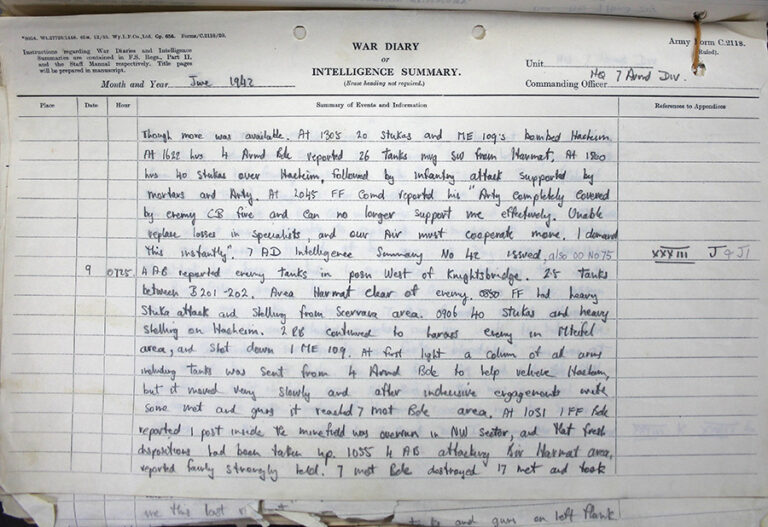
The original catalogue for these records was a typescript list with the entries shown under various headings and sub-headings. Records were originally identified by browsing through these pages, but keyword searching via Discovery, our online catalogue, could be more difficult if the researcher was unsure what search terms to use. This could be complicated by the way punctuation marks and abbreviations were used within the text.
The cataloguing project
The work involved checking all the descriptions in each series and then making changes where needed. Checking the original documents was sometimes necessary, especially where the meanings of terms used in the catalogue were not clear. In most cases though, adding the full text was enough. Some examples of the amendments are shown below.
| Original description | New description |
|---|---|
| A/Tk | Anti-tank |
| C.R.A.S.C. | Commander Royal Army Service Corps |
| Fd. Pk. Coy. | Field Park Company |
| H.A.A. Regt | Heavy Anti-Aircraft Regiment |
The original abbreviations and shortened words were retained because these terms often appear in other sources including soldiers’ service histories. British infantry battalions were mostly re-catalogued some years ago in an earlier project, so little work was needed on those entries. Many thousands of war diary descriptions have been improved by the project, with full text being added in nearly every case. There were a small number of exceptions though, as the original document did not always clarify the meaning of an abbreviation, so a few of these entries were left unchanged.
A ‘before and after’ comparison can be seen in the old catalogue list page and current catalogue link below.
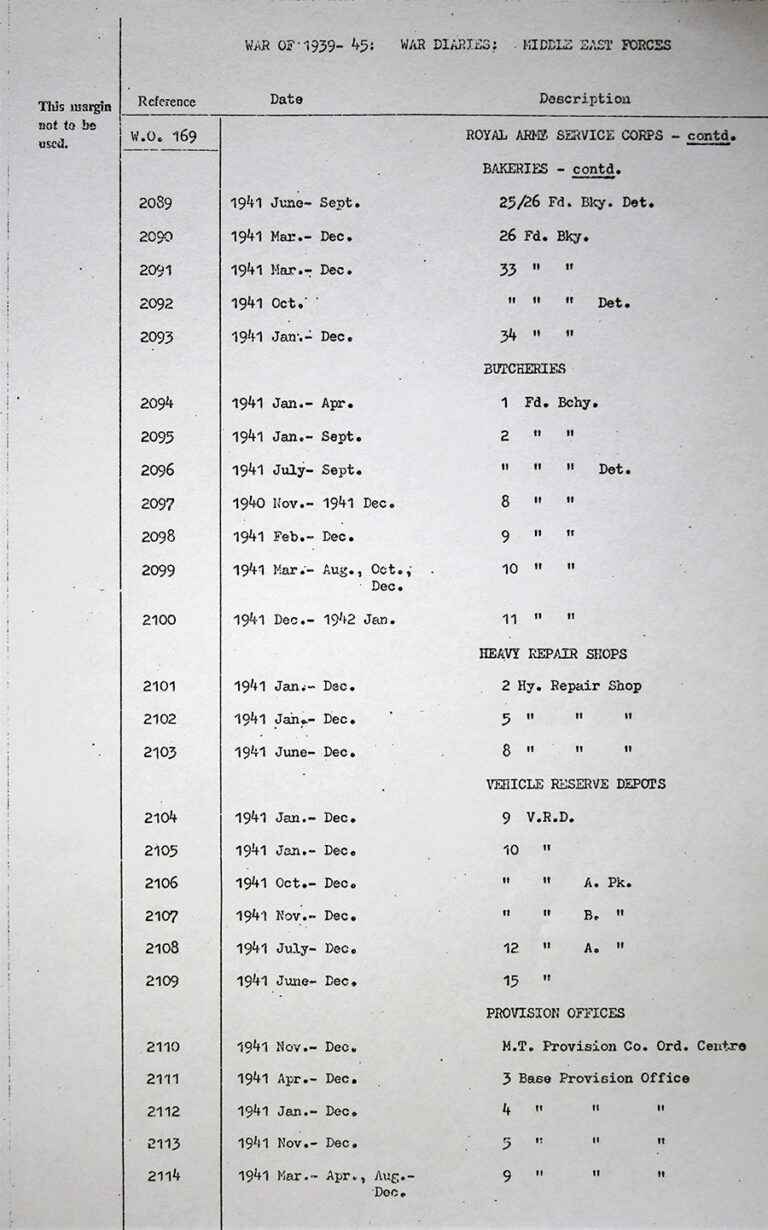
In addition, some of the anomalies, such as inaccurate headings, have also been corrected though these were uncommon. WO 169, the Middle East series and largest series of all, was completed in September 2021, and work will now focus on WO 172 for South-East Asia, until that series is also complete.
Catalogue search methods
To find war diaries via Discovery, the following search terms can be used:
- Unit or headquarters description
- Name of force or command (e.g. Western Desert Force)
- Abbreviated or truncated words (e.g. Med Regt or WDF)
- Function (e.g. transport or military police)
- Location (e.g. town or region)
- Nationality (for foreign or colonial troops under British command)
- Date range (in years)
Locations are not often listed but some do appear, such as Crete or Le Havre. They refer to bases, static headquarters and the like, not the whereabouts of mobile forces such as infantry battalions. A few place names were added during the project where they were easy to find in the records. Some examples of locations for Crete and Le Havre are shown in Discovery here.
Other results of the project
While checking the documents it was possible to examine their contents in more detail, and some interesting material came to light, including posters and foreign stationery. These items can be quite varied but unfortunately they do not fit easily into the format of the catalogue description. A selection is shown below.
British Expeditionary Force posters
Two of a very early set of posters reminding soldiers not to reveal military secrets:
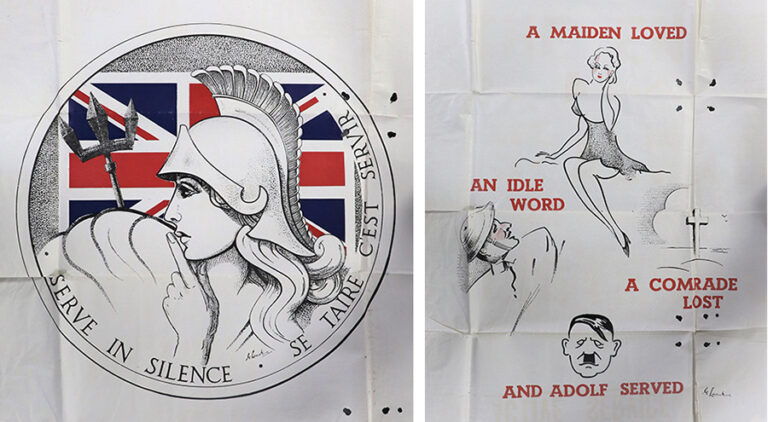
Norwegian brochure
Cover of a local guide brochure from the town of Tromsø in northern Norway:
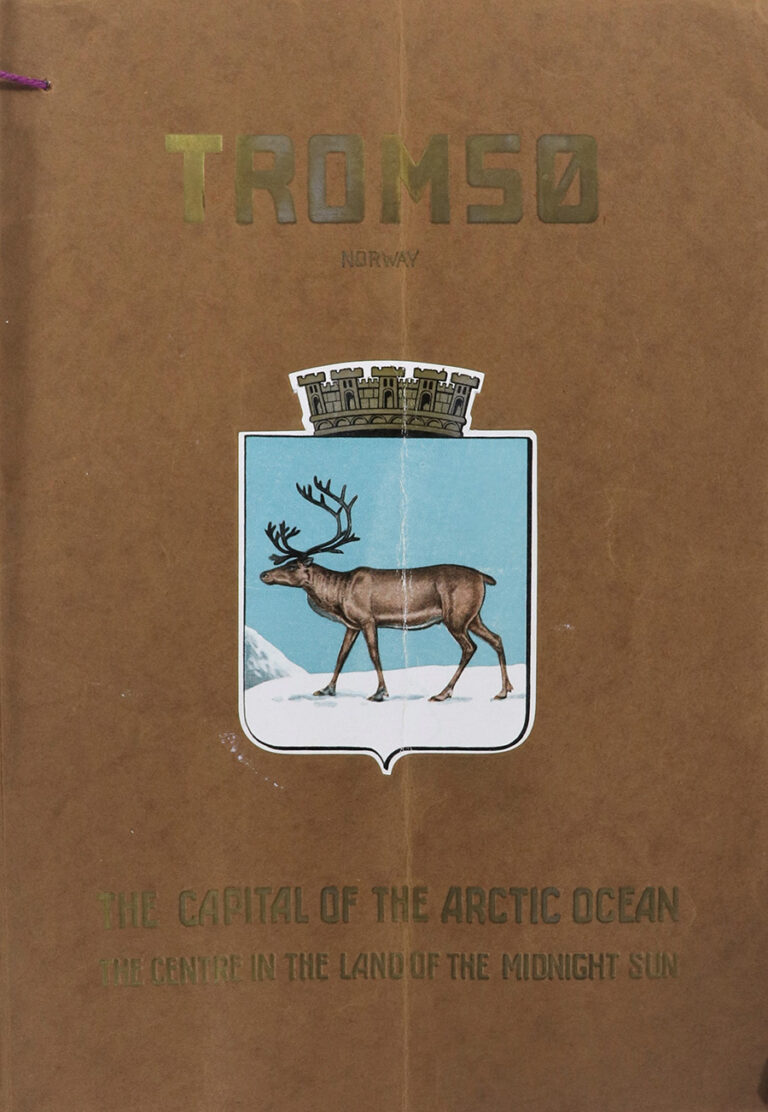
Burning biscuits
A German air attack on Mersa Matruh in Egypt set fire to a biscuit store. Unusual incidents such as this are mentioned in the records from time to time:

Increments of pay
Names of other rank soldiers occasionally appear in the records, though much less often compared to officers. In this example a casualty form was used to record pay details:

‘Desert Rat’ football
A simple poster for a football match organised by 7 Armoured Division while in North Africa:

Italian stationery
One of several captured Italian forms from Libya. It refers to consumption of oil and fuel. The backs of the forms were blank so they were used as note paper. The form is also marked Anno XVII (Year 17 or 1939) in the upper right corner, meaning the length of time that fascism was in power in Italy:
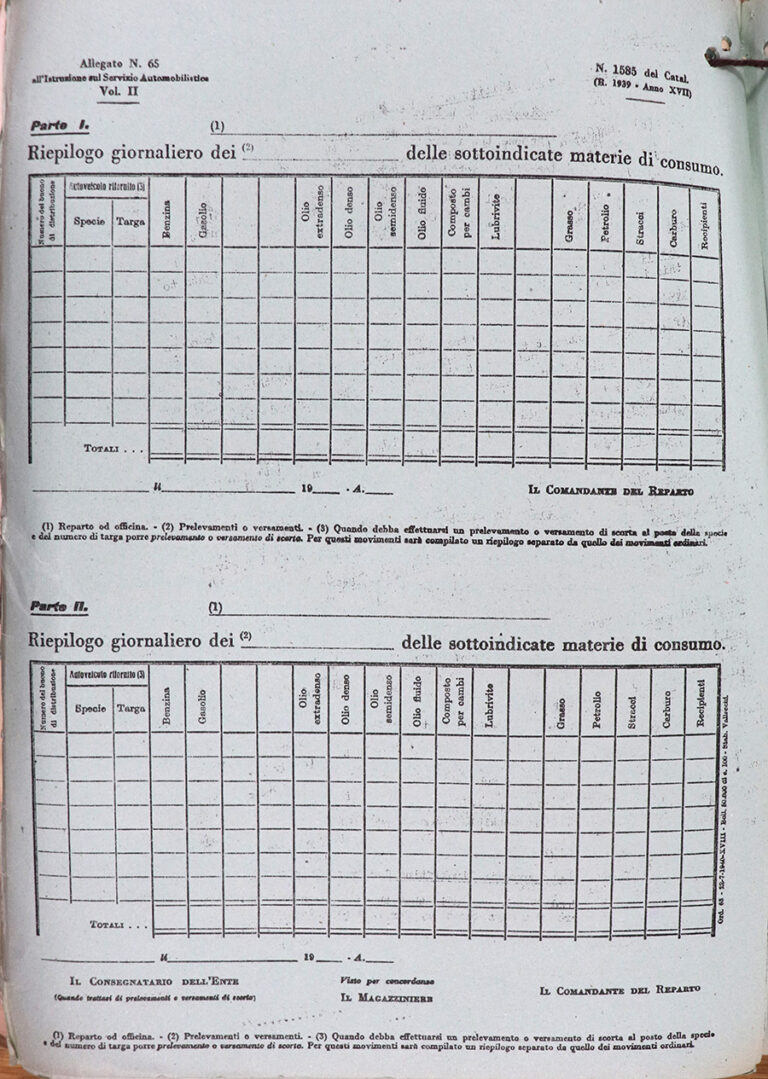
It seems to me that abbreviations Like “H.A.A” are well-known and were in use during the First World War (where one of my grandfathers was in). There are the obvious errors in the catalogue like describing the Welsh Regiment/Fusiliers (I can’t remember which it was) which were actually the Welch (not Welsh) at the time. Unfortunately the MOD still use abbreviations without explanation for recent records.